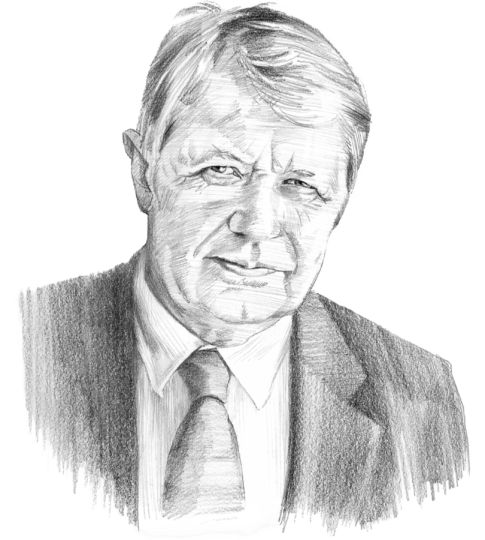Russia between the U.S., China and Europe
In the absence of an agreed international order, Russia is undergoing a search for its role among the world’s great powers. A long-run challenge will be to balance Russian interests against those of both China and the U.S., while it pursues closer cooperation with Europe.
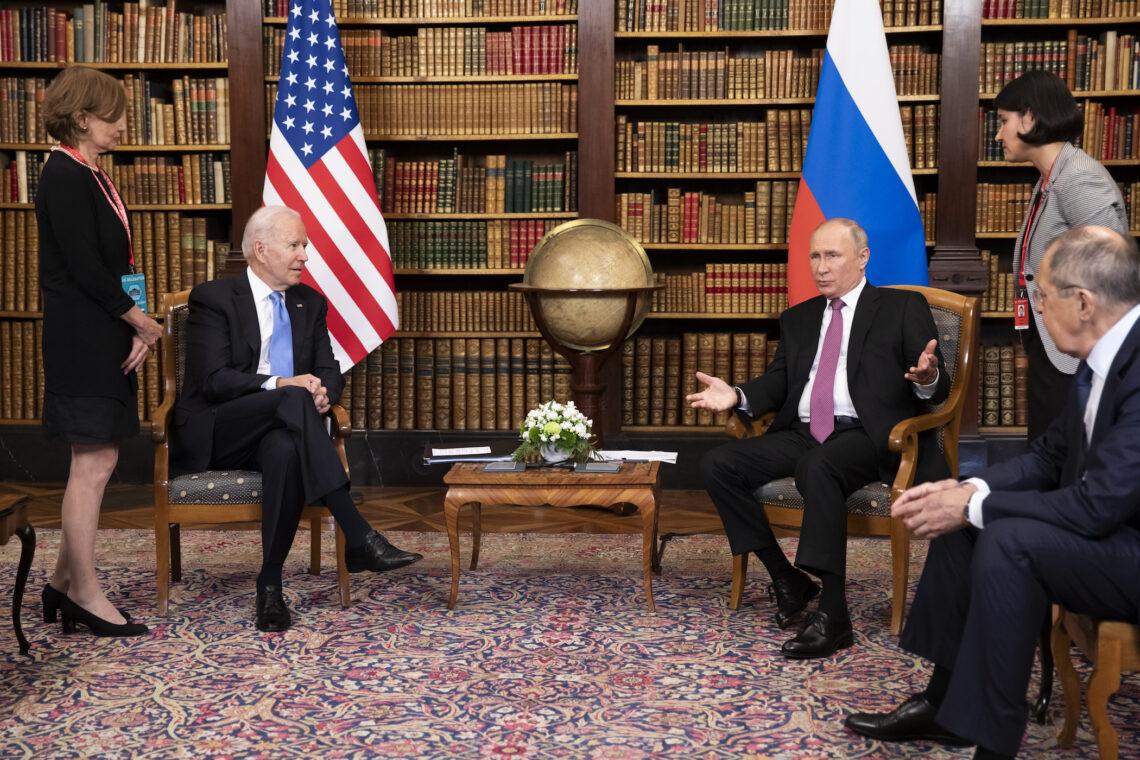
In a nutshell
- Russia is searching for its role in a rapidly changing world
- The future of Siberia will decide Russia’s global positioning
- New collaboration with Europe will be key
June 16, 2021, will not go down well in history. After weeks of personal insults from one side and self-isolating international behavior from the other, the leaders of the United States and Russia met in Geneva for a personal exchange.
These two men had met before, but this was the first summit with Joe Biden as president. There was also a prior consensus: both Mr. Biden and Russian President Vladimir Putin had said that bilateral relations between the U.S. and Russia were at a low point. However, this hardly meant more than confusion for either side.
Neither the U.S. nor Russia were ready for reengagement, but each had its own incentives to hold the summit. The outcome was much ado about nothing. The respective ambassadors, who were recalled following Mr. Biden’s “killer” insult in March, returned to duty, and both leaders vaguely reaffirmed a need to enhance strategic stability. Other than that, the two maintained a wait-and-see attitude, backed by a few new working groups.
And yet, for both Presidents Biden and Putin, the mere meeting itself was important – above all in domestic echo chambers. Amid blame games over Trumpism, Mr. Biden had to present himself as presidential and strong, vis-a-vis both the Republican party and his own progressives, and ready to engage in international affairs as a leader.
Mr. Putin, for his part, had rather different reasons to agree to the Geneva meeting (although in the end he, too, was above all anxious to enhance his personal standing, facing several elections). The Russian leader was not part of any major global initiatives nor of alliances that would reach beyond his country’s borders. At that stage, he could turn to neither China nor Europe to enhance his international standing. Russian diplomacy had been recently successful in areas of geopolitical interest like the wider Middle East and the Caucasus, although so far had not resulted in dependable structures of geopolitical relevance, with success mostly following American retreats.
The U.S. continues to take the quagmire in Ukraine as the touchstone for future relations with Russia, even though Ukraine itself would be the main beneficiary of a U.S.-Russian settlement. Russia too might gain from solutions for this region of overlapping interests, but it has little political room to maneuver into such initiatives. Mr. Putin’s position is weakened further by the crisis in Belarus.
New context
Historical analogies are tempting, but often misleading. The Biden-Putin meeting happened at the same venue where Ronald Reagan and Mikhail Gorbachev met in 1985. The U.S. president had said at the time – with the Soviet leader’s consent – that “the world was approaching the threshold of a new day. We had a chance to make it a better and safer place.”
Yet the Soviet empire was visibly running out of options. Washington avoided triumphalism and prepared for managing the transition to an uncertain Russian future. With support from the preeminent U.S., but without keeping the USSR together (the American preference at the time) Russia engaged in a long-term effort to recover from the devastating war with Germany and reorganize for an enduring process of resurgence, reconstitution and economic recovery, within shrunken borders and a diminished population.
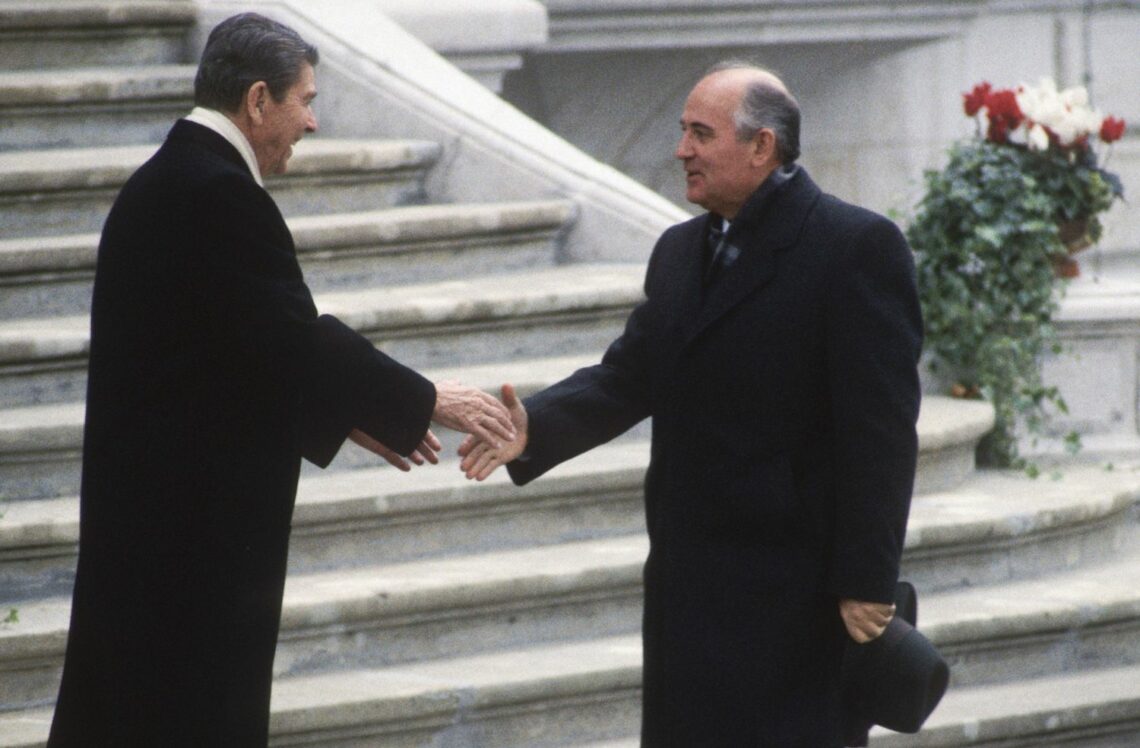
The Biden-Putin meeting took place in a much different world. It was marked by stagnation and (mostly self-imposed) constraints, lacking an American agenda. The disaster of Donald Trump’s effort to develop a new U.S.-Russian bilateralism was followed by a return to the minimalist Clinton-era approach toward Moscow, reducing the scope for relations to pragmatic and procedural symbolism.
Unlike during the Reagan-Gorbachev days, the U.S. has little to gain from a new bilateralism in the shadows of its increasingly dominant rivalry with China. Neither the U.S. nor Russia see themselves exposed to existential threats. For Europe, it has been convenient to use the anxieties of its eastern members as sufficient reason to prioritize coherence over future relations with Russia.
For Moscow, this means that Europe is unlikely to consider another reengagement anytime soon. Europe’s stance has also helped keep U.S. interest in NATO alive. For the West, then, policy coherence therefore depended on sticking to punitive policies toward Russia.
This has limited Moscow’s options. Giving growing concerns over an asymmetric interdependence with China, Russia may reconsider its reluctance toward Europe – and indeed its stated interest in Europe’s decline – although it does yet not see itself ready for a new opening to the continent.
Citadel posture
Russia’s best choice at this time is to buy time and avoid being pressured into geopolitical decisions. This approach has narrowed the space for European initiatives toward Russia – a condition dubbed by observers the Russian “citadel.” More recently, foreign policy circles have begun to predict that Russian policies on Europe could change within the next five to 10 years. It remains hard to tell whether that change would come due to political change in Europe, increasing American indifference or growing domestic and internal pressures.
Under these circumstances, President Putin’s best option was indeed the one offered by Mr. Biden’s invitation to meet, although its price was a stiffened Euroatlantic multilateralism that would be reinvigorated by a common stand against Russia. The Geneva summit put Mr. Putin back on the global stage – and importantly, gave Russia clout in the face of its looming Chinese neighbor.
As for Europe, it now faces a more urgent choice between confronting Russia with U.S.-dominated multilateralism and waiting for Central and Eastern European nations to learn to use the EU’s Single Market in the great power competition. Outcomes of the forthcoming German and French elections will be followed closely in Moscow, as well as Washington.
The Geneva summit will reveal fewer direct consequences than the preceding three multilateral gatherings – the G7 meeting, the NATO summit and the U.S.-EU meeting. But even these did not result in decisions that directly affected Russia’s relations with Europe and the U.S. Moreover, the G7, from which Russia has been excluded, has lost momentum. The G20 forum has become more important, notwithstanding global leaders’ embarrassing treatment of Mr. Putin at the group’s summit in Australia.
Russia’s best choice is to buy time and avoid being pressured into geopolitical decisions.
The NATO meeting was closer to matching Russia’s level of ambition and competence. But Russia knows that the end of the Cold War and the withdrawal of Russian forces behind the Federation’s borders had major consequences: the very rationale for NATO’s establishment – containing the USSR, solving the issue of a divided Germany and keeping the U.S. engaged in Europe – has lost its relevance.
As Mr. Gorbachev had stated, the end of the Cold War deprived NATO of its raison d’etre. Ever since, the alliance has sought to reinvent a new political rationale. Turning NATO into a collective framework for national standing forces would have required a degree of political reform and integration that was hard to achieve; it was rendered nearly impossible by the concurrent enlargement by nations bound to undergo an unprecedented transformation in the shadows of a Russia certain to engage in a process of resurgence.
Back in 1965, former German Chancellor Konrad Adenauer anticipated that Russia would disappear as a perceived reason for NATO’s existence when he observed Moscow’s role in mediating a truce between India and Pakistan. But the possibly premature enlargement of NATO resulted in a quest for U.S. protection by nations formerly within the Soviet Union’s orbit. This resulted in a new rationale for a limited American military reengagement in Europe, albeit one that lacked a structure for stabilizing or ending this new confrontational scheme.
Russia was thus faced with a new Western multilateralism: one that was not per se a threat to Russia, but which turned the intermediate Central and Eastern European region of overlapping interests into a region of built-in tensions, and without stated conditions for a continental resolution. Prospects for a reengagement with Russia had disappeared long after the U.S. sought to avoid a risk-laden disintegration of the Soviet Union in the early 1990s. President George H.W. Bush had failed to dissuade Ukraine – at Mr. Gorbachev’s request – to leave the Union, but had at least ensured that post-Soviet Russia would be the sole nuclear successor state within the envisaged Commonwealth of Independent States.
Russia faced the task of reconstitution under constraints, and amid unprecedented challenges of political and economic reform. The U.S. had again resumed a (temporary) global dominance, although it was prepared to engage in further strategic contraction. And Europe had to deal with the challenges of achieving greater political integration while managing the inclusion of not only eastern Germany, but the Central and Eastern European nations into its institutions. This task turned out to well exceed the power that Europe’s leading nations had to mold the continent’s politics.
Status update
Where does this leave Russia in the great power competition? A stable nuclear weapons regime is currently the one major interest that it shares with the U.S.– although, once achieved, it would tend to remove nuclear weapons from the primary political agenda. Moscow siding with China would be welcomed in Beijing, but it would mean a Russia without the leverage to avoid asymmetric interdependence.
The EU-U.S. meeting was followed by a European Union Council meeting on dealing with Russia that was not prejudiced by the U.S., but influenced by a minority of EU members that had been part of the USSR or the Warsaw Pact, who blocked a Franco-German initiative to consider a new approach toward Russia – one more constructive, but conditioned.
In the longer run, balancing Russian interests vis-a-vis China and the U.S. and maintaining sufficient ambiguity in both relations will be Moscow’s dominant challenge. While the U.S. is unlikely to pose a direct, existential threat to Russia, a close Russian strategic association with China may increase risks beyond Russia’s control, reopening the potential for direct conflict with the Americans.
And, given the nature of the U.S.-China rivalry, Russia has little to offer Beijing other than military power, which the U.S. will be able to check. A remote worst-case scenario could be a double crisis over Taiwan in the Pacific and at a European hotspot, which would engage the U.S. simultaneously with China and Russia, possibly leaving Asian and European allies in uncertain territory.
In this vein, Russia is a special case. It has huge potential: human capital and natural resources that could be fully realized through industrial reform and the development of Asian Russia, above all with European financial and technological support. For Europe, cooperative engagement in Asian Russia could open new horizons in a world of shrinking opportunities and increasingly asymmetric interdependencies.
Facts & figures
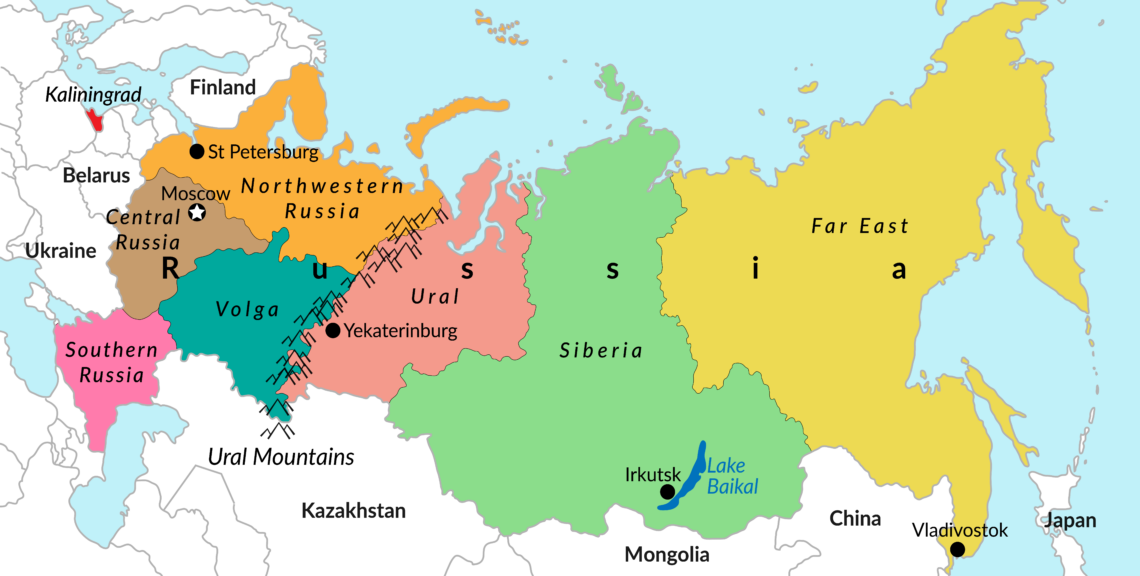
As of now, however, Russia has locked itself into a kind of self-isolation in the industrial world – a “citadel” – while Europe has blocked constructive initiatives through its fixation on personalities, self-imposed constraints, sanctions taken to test unity, and its failing capacity to position itself in the global competition. The earlier, more modest engagements by nations to alleviate obstacles and open new avenues of approach seem to have lost their momentum. Moreover, occasional attempts to use tactics from the Cold War experience, like arms control and confidence-building measures, simply ignore the unique circumstances that lent importance to those means of substituting symbolism for political solutions.
Thirty years since the collapse of the USSR, Russia has certainly come a long way from what Vladimir Putin had labeled the catastrophe of the century. Yet it obviously is still searching for its identity, its role among great powers and its future – split between its European heartland and its vast, still to be developed riches in Asia. It is hard to see Russia separated from Europe. As foreign policy expert Angela Stent has reminded the West, “in the 19th century, Europe validated Russia’s role as a great power player on the Continent.” In fact, it was in that century that Russia became part of the system and culture of the European balance-of-power system. It was along with this Europeanization that Russia engaged in its Eastern expansion, though Asian Russia has yet to become part of Russia’s cultural orbit.
Continental shift
Russia became an evolving global player through its Asian expansion; although, not unlike the U.S., with Europe acting as Russia’s “gateway to the achievement of great power status,” to again quote Ms. Stent. “Russia rose to prominence internationally through the European interstate system,” she argued, “as a player in the complex and shifting alliances of 19th-century Europe.” Whereas the U.S.’s western expansion resulted in a continental power with considerable coherence, Russia is still incomplete and far from being a bicontinental nation, as the end of the artificial Soviet system has shown.
The future of Siberia will decide Russia’s global role. Direct confrontation with the other emerging global power, along with its own resulting status as a dominant nuclear power, catapulted Russia into its eventual role as a self-proclaimed global superpower – not unlike the U.S., although far less endowed with worldwide influence. The fates of Russia and the U.S. in Afghanistan have demonstrated the limits of such power for both.
Russian diplomacy has lately been successful in areas that were once more contested. It has overcome the efforts to isolate Russia through various exclusions and sanctions, even though the Kremlin has not so far engaged in workable coalitions or new partnerships. In fact, following the frustrations over its European prospects since the early 2000s – and following the disillusionment over its own eastern pivot – Moscow has tended to remain active on the diplomatic plane.
Domestic coherence in a state extending across 11 time zones is a challenge.
Yet Russia cannot escape the new dynamic of the great power competition, primarily between the U.S. and China, all the more so since it seeks qualified cooperation with Beijing without allowing the Chinese to dominate the resulting interdependency. Moreover, it seeks to preserve the status and presumed value of its nuclear power, which results primarily from the perception (if not illusion) of being roughly an equal of the U.S. For the foreseeable future, Russia will need to reform its economy and change its dependence on exporting fossil fuels, which will require openings toward Europe and an agonizing reappraisal of its international agenda.
At present, the beginnings of a generational change within Russia’s establishment seem to envisage a possible new window of opportunity in an eight-to-10-year time frame. However, the pace of Russian change tends to lag behind that of Europe or the world as a whole (although Europe now faces its own inertia, internal disarray and a lack of geopolitical consensus). Russia will likely face problems of internal cohesion, in steering eventual reform, in balancing its ambition and capacity, and in coping with its vulnerability to volatile global oil prices and access to energy markets. And, like Europe, Russia will need to reconsider the post-Cold War era: revisionist history will matter in efforts to shape the future options of both Russia and Europe.
The end of Soviet Russia did not result from revolution, nor from defeat, which it narrowly avoided in World War II. It was, rather, the outcome of some 70 years of sustaining a systemic competition that Russia had sought to turn into secular global change. This collapse changed the world far beyond what occurred thereafter within Russia. It left the world with an unprecedented necessity for global order – arguably even more so than in 1918 or 1945.
Identity search
In the absence of an agreed international order, Russia is searching for a role as a nation within a rapidly changing world. This certainly is also true for the U.S., which is trying – with limited success – to restore domestic strength as a precondition for a renewed global role. It is also true for a China, catapulted through its domestic rise into direct competition with the U.S., though without a consensus on what such a competition is eventually expected to achieve. This dynamic may also be true for India, whose growing prominence invites comparisons with the fast-rising China, even if its domestic fragility and backwardness cannot be overcome by a rising international role.
Europe, meanwhile, does not even allow for firm geographic and geopolitical definitions. Over time, its internal tensions will tend to induce renewed fragmentation rather than unionization – even if institutionalizing functions may continue serving the interests of both its relatively self-reliant nations and the majority of its members, which can best survive through support within European constructs.
Like the U.S., Russia was thrown into world politics through its increasing involvement in European affairs in the 19th and 20th centuries. It was through their common victory over Hitler’s Germany that Russia acquired global power status. This was stabilized primarily through its eventual role as a nuclear weapons state and its continued occupation of and military presence in most of Central and Eastern Europe. Another significant element was the resulting confrontation with the U.S., which led to the protracted and increasingly global competition of the Cold War.
The outcome was the dissolution of the USSR in 1991 and Russia’s subsequent retreat behind the borders of the residual Russian Federation. This ended an unprecedented competition that had turned mutually existential threats into a new kind of stability. It also demonstrated that military power (as standing forces) may remain indispensable to secure state power in uncertain surroundings, even if it no longer promised the traditional gains from its political application, at least on a larger scale.
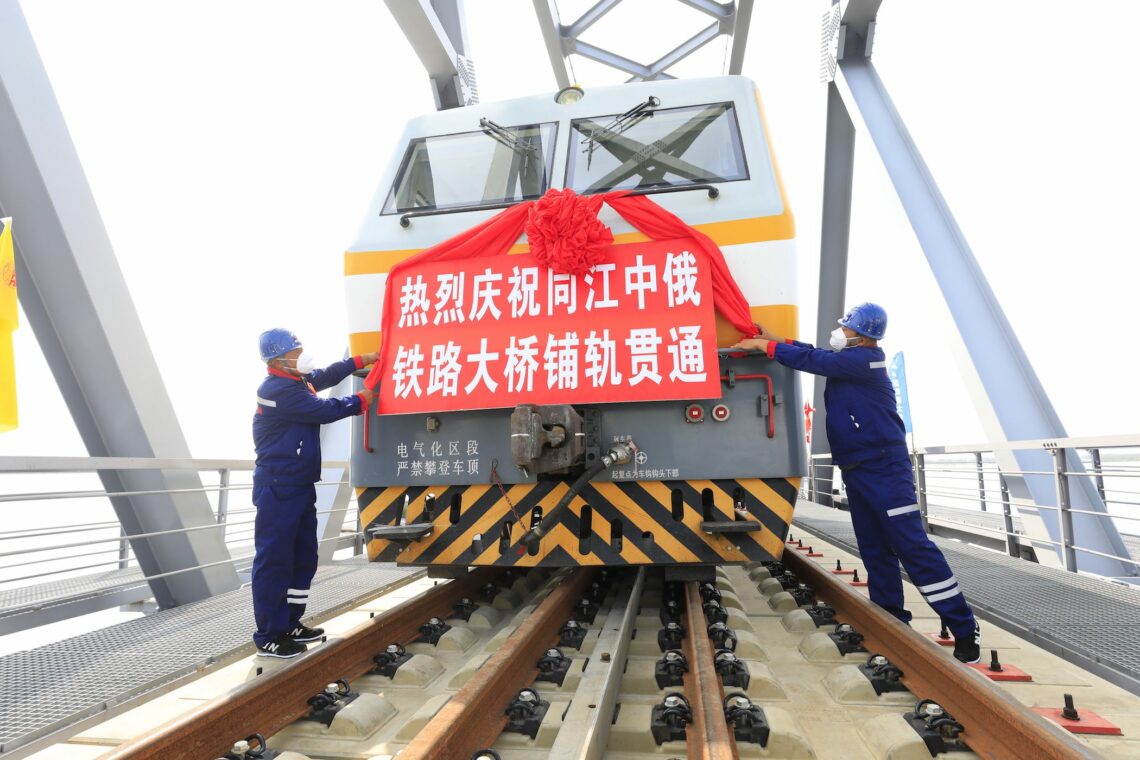
The end of the Cold War saw the U.S. without a unifying threat, although (somewhat unlike in 1945) it also left its institutional, military and ideological predispositions largely unchanged and prepared for future confrontation. With the Cold War over, Washington sought to engage in new methods of globalization. But it became clear that without confrontational incentives, multilateralism was losing its political rationale and effectiveness – and tends to allow new competitive practices even within U.S.-dominated multilateral structures, most explicitly pursued by China.
For Russia, the end of the Cold War was the end of a 70-year empire; it got outcompeted economically, and the rest was bound to follow. Russia not only lost the attributes of Soviet power, but lost a third of its territory and saw its military forces turned nearly inoperable.
The internal constitutional changes resulted not from revolutionary pressures nor from external defeat, but from fatigue and diminishing competitiveness. The glory of the “Great Patriotic War” receded, and prospects for self-isolation grew, though alongside a need to restore both global status and control of its “near abroad.” In hindsight, it seems odd that it was Russia’s vast nuclear weaponry – despite being neutralized through a stalemate – which secured its unique status as a global power. The U.S. insisted and supported (even financially and technically) the result that Russia would be the sole nuclear successor state, notwithstanding all political theatrics about Ukraine’s “nuclear deal.” In fact, the U.S. sought to prevent the total disintegration of the USSR in the first place, especially the separation of Ukraine.
Russia has little to offer Beijing other than military power, which the U.S. can check.
Russia’s subsequent resurgence has occurred in stages that resulted in part from internal changes, in part from external interference, and all the while from self-imposed constraints. It thus turned out to be hugely more difficult than, say, Germany’s recovery after 1945.
Domestic coherence within a transcontinental state extending across 11 time zones is itself a challenge. That was exacerbated by Boris Yeltsin’s failure to reintegrate Russia. Vladimir Putin became the answer to the threat of hostile fragmentation. The disastrous state of the Russian Federation’s armed forces did not get fixed until following the Georgian crisis in 2008, though thereafter with the considerable success of reforms, albeit on a regional scale. Rising global oil prices boosted Russia’s financial situation at the same time, although without encouraging the needed economic reforms that were increasingly seen as endangering political control.
Ever since World War II, Russia’s fate was shaped by its relations with the U.S. through a series of dynamics: America’s reluctant entry into the war, without which Soviet Russia would likely not have survived; the concurrent new global roles and ambitions of the two, as opposing nuclear powers; their direct confrontation and political co-responsibility for settling the postwar architecture; an unprecedented arms race that reflected the underlying political and economic systemic competition; America’s efforts to keep the USSR together and to keep Russia as the sole nuclear successor state; and lastly, the eventual dissolution of the Soviet Union, not by defeat or revolution, but still via a systemic change with uncertain outcomes. Until the end of the Cold War, a framework had developed within which the U.S. and the USSR could increasingly agree on relative stability, one which was sufficiently ambivalent to meet American and Chinese interests concerning Russia.
Strategic choices
The deep-seated U.S. concern over Russian-European geopolitical rapprochement outside its reach will continue to shape U.S. relations with both Russia and Europe, and it will not favor enduring results. It may indeed contribute to a failure to solve problems that matter in the great power competition. But summits like the one in Geneva on June 16 could define the scope of available choices in the coming years for a geopolitical rearrangement. The U.S. will continue to seek dominance through multilateralism, even without the momentum and unanimity that marked the Cold War.
China will continue to improve its global competitiveness in relation to the U.S. But President Xi Jinping is returning to a version of Deng Xiaoping’s strategy not to prematurely show strength. As in Russia’s relations with the U.S., its ties to China will be defined by the ambiguity of ambition and a balancing of interests, priorities and status. Russia will continue to seek a truly global status recognized by the U.S., at least as long as the nuclear political currency matters.
The prospect of a closer coalition with Russia to grow its influence runs into the dilemma that China would clearly dominate any eastern pivot by Moscow, even though Beijing might continue to present an image of a “credible, lovable and respectable China,” as President Xi has recently called for. The asymmetric interdependence between China and Russia might remain manageable. Yet if Russia’s future depends above all on the development of Russian Asia, eventual tensions and conflicting vital interests will not find a framework for reconciliation and constructive cooperation. That leaves Russia with its fateful relations with Europe.
What, then, are the prospects for Russia in the great power competition? Ceremonial multilateralism hardly pays anymore. It is not even worth much in the U.S. or Europe these days, ironically in part because the spread of political cancel culture is eroding public confidence and weakening democracy. Russia’s confidence in the political value of the nuclear political currency will continue to diminish, forcing Moscow to look for more effective ways to enhance its position. This, in turn, renders strategic arms control even less attractive for the U.S. as a field for bargaining with Russia, all the more so since China is unlikely to engage in the process. For China, the attributes of nuclear deterrence and escalation control do matter in U.S. relations; but arms control would not give China an upper hand in that rivalry. The shift from military-strategic competition to economic-technological competition favors both leading competitors, and intensifies their rivalry.
Reform in Russia will eventually become unavoidable, but it will take a generational change.
The key for Russia’s full return to the world stage lies in Russia. One must keep in mind that the end of the USSR resulted above all from its economic collapse. As both Mao Zedong and Deng Xiaoping had warned at the time, the collapse was the consequence of focusing on the wrong priorities. It took until about 2008 before Russia again chose to upgrade its defense over economic reform. President Dmitry Medvedev had sought to reduce dependence on Russia’s oil industry exports and engage in reform at the possible expense of lesser political control and coherence. Instead, Vladimir Putin, returning to the presidency, reversed Mr. Medvedev’s campaign to avoid potentially catastrophic fragmentation.
Reform will eventually become unavoidable, but it will take a generational change. And rather than taking the risk of disintegration and weakened control, the best and possibly most promising choice for Russia would be to resolve the uncertainties clouding Russia’s unity through the gradual integration of European and Asian Russia. This will be a huge civilizational challenge. But the full development of Russia’s eastern riches will be the answer to Russia’s quest for identity and cohesion, as well as to its requirements for economic reform. Russia must engage in partnerships, and while it will need to balance the Chinese and European options, close cooperation with Europe would likely enhance the chances of Russian cohesion. This would require a Eurasian project with European partners. While a framework for cooperation between the EU and the Eurasian Economic Commission seems a natural consequence, this would still be a departure from the Eurasian dream still entertained in Moscow.
This Eurasian project would serve Russia’s and Europe’s basic interests, both economic and geopolitical. It could keep Chinese competition at bay without creating added hostility with China. In turn, it would also serve the American position in an enduring rivalry with China. This would likely lower U.S. concerns over European-Russian rapprochement, especially if Europe finds ways to position itself as a pivot between a transatlantic and an Asian partnership.
The development of Siberia (and regions with similar conditions) will be heavily influenced by how climate change affects the permafrost there. Though Europe is mostly worried about the negative effects of climate change, the phenomenon is likely to allow greater access to Siberia’s resources. If Russia and Europe were to cooperate in the exploration of Siberia, Europe’s green agenda would presumably become far more complex. While climate change today is suggested as a possible area for pragmatic cooperation, a joint Siberian project would make it a central challenge, with multiple implications.
This is an improbable vision. It will take time, patience and persistence. It will also require overdue reforms of European institutions. And with the rediscovery of geopolitics, Europe – like the other three quadrilateral powers – must learn not only the shift from military to economic power, but the strategic combination of state and economy, that is, the geopolitical dimensions of economic competition. Amid the turbulence of Russia’s recovery efforts in the early 1990s, a wise British ambassador to Russia, Rodric Braithwaite, offered prudent advice: “Perhaps the most useful thing the outside world can do is to help Russia remain open.”
